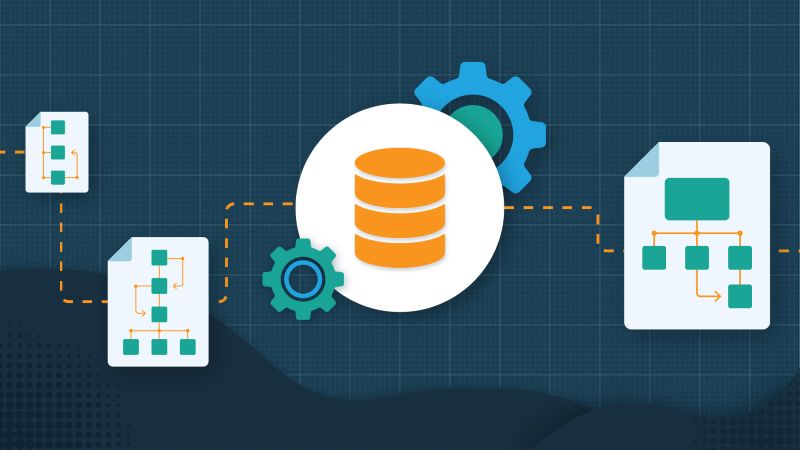Table of Contents
In our inaugural “Data After Dark” series — part webinar, part cocktail party — a panel of experienced MDM experts discussed master data management (MDM) from their different viewpoints – a customer implementer, a Microsoft data technologist and an MDM vendor.
Between sips of their old-fashioneds, our panel of experts from Microsoft, Quest Analytics and Profisee covered:
- How and why to use Master Data Management
- The role of MDM in a typical Microsoft Azure implementation
- Common implementation scenarios and common pitfalls (to avoid!)
If you missed the live stream (or your memory is a bit fuzzy), we’ve highlighted a few of the key takeaways below in the first of our two-part recap — and be sure to watch a recording of the event to get the full experience and hear all the insights from our expert panel.
Mastering the Customer Domain for a Customer 360 View
Neal Danner, Chief Technology Officer at Quest Analytics in Kansas City kicked off our session sharing MDM can help clean, merge and master customer data — from his perspective as an MDM user and customer. He started off by saying companies have several different touchpoints with their customers — perhaps the products they purchase directly from the sales team or their interactions with the customer service team — and that data is stored in various CRM, ERP and other systems across the enterprise.
“So, you can have the same one customer, but various departments that interact with that customer can have a different view,” Neal said. “And what’s missing is the ability to see above the individual departmental view and see the whole picture of the customer.”
He added, “Without creating a unified view of the customer, it is very easy for the customer to hear multiple, but inconsistent voices/messaging and that makes for a bad or potentially bad customer experience.”
“Without creating a unified view of the customer, it is very easy for the customer to hear multiple, but inconsistent voices/messaging and that makes for a bad or potentially bad customer experience.”
— Neal Danner, Chief Technology Officer at Quest Analytics
Rather than limit their focus to implementing or trying to match customer data in analytics tools, Danner recommends organizations consider an MDM solution.
“Master data management allows you to apply data quality rules and governance to all these disparate stores of customer data to create a unique customer identity,” he said. “And when you have applied these data principles to your core data, you now can bring congruence across product lines and that increases the capabilities your business can deliver to the marketplace.”
Unlocking the Value of Enterprise Data Warehousing in Azure
James Serra, Data Warehouse Evangelist at Microsoft, joined us to share his perspective as a seven-year veteran at Microsoft with many years of experience in data and having worked with several customers on their enterprise data warehouse projects.
James shared that customers often come to him for help building an enterprise data warehouse in the cloud using Azure — and they’re often trying to pull data together from several sources in order to glean better insights to drive informed decision-making.
“There’s a lot of moving parts in creating an enterprise data warehouse, and one of them is pulling the data and extracting it from many different sources,” James said. “And no matter what source they pull it from, they’re going to have to clean the data.”
James shared an example of an order-entry system that requires customers to enter their birthdate. If the user isn’t sure what to enter or prefers not to enter their birthdate, they may enter a year hundreds of years either in the future or past — and this can reduce confidence in the quality of the enterprise data warehouse and its ability to deliver valuable business insights.
“The last thing you want to do is come up with the report and you give it to the end-users for the first time and they look at it and go, ‘Why is this customer listed twice?’ — because you lose confidence right away.”
— James Serra, Data Warehouse Evangelist at Microsoft
“If [customers] are pulling data from multiple sources that may have to look at customers as an example, they’re going to have to master the data,” James said. “The last thing you want to do is come up with the report and you give it to the end users for the first time and they look at it and go, ‘Why is this customer listed twice?’ — because you lose confidence right away.”
He continued, “You want to make a good first impression. Otherwise, it is tough to recover that lost ground. So I spend time educating [because] a lot of customers don’t know what they don’t know. They’ve never built an enterprise solution anywhere else before. And so, they’re not really quite understanding what MDM is and how it fits into the whole picture.”
WHERE DO I START WITH MDM?
While MDM is undoubtedly an IT solution, it’s key to get the right internal stakeholders on board and determine the process change management that has to occur. Neal at Quest Analytics emphasized that the keys to success include having the right internal resources working on the project, having strong vendor support and that the solution supports automation as key part of the process.
“More than anything, it is getting the operational model and mindset in sync internally as you prepare to implement a master data solution,” Neal said. “Another key to success is stakeholder engagement and helping them see that better business outcomes are possible [through MDM].”
Tying MDM to Real-world Business Outcomes
We know that the No. 1 issue companies face when considering an MDM implementation is convincing business stakeholders of its value by tying it to real-world business outcomes. Garnering support and agreement from the C-suite and other stakeholders is mission-critical to the success of any MDM implementation.
That’s why Profisee includes this assistance in projects as part of the business impact roadmap that they build with prospective customers which helps identify the business outcomes and the impacts and/or potential impacts of implementing and NOT implementing MDM.
It’s critical to get agreement that MDM positively impacts operational processes and understand that if you don’t get it right, there is a substantial opportunity
Companies often end up, for example
- Delaying new products to market
- Hurting existing customer relationships
- Introducing more risk into the business
These things all have a cost. MDM done well allows you to impact your business goals in a positive way and focuses your company on a growth mindset and supports the development of additional ways to invest in new business opportunities.
For more expert insights, including how to use MDM to unlock the power of Microsoft Azure, continue reading our two-part Data After Dark recap. Also, be sure to watch a recording of the event and keep an eye out for future Profisee webinars and events.

Martin Boyd
Martin Boyd is the VP of Product Marketing at Profisee and has over 15 years of experience in MDM, data governance and data quality.















